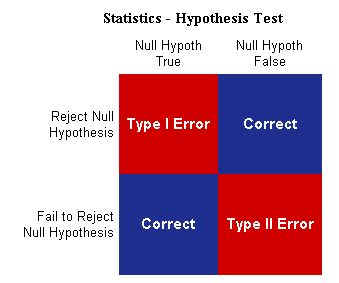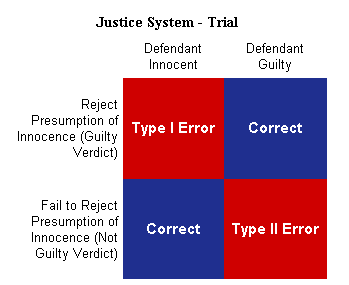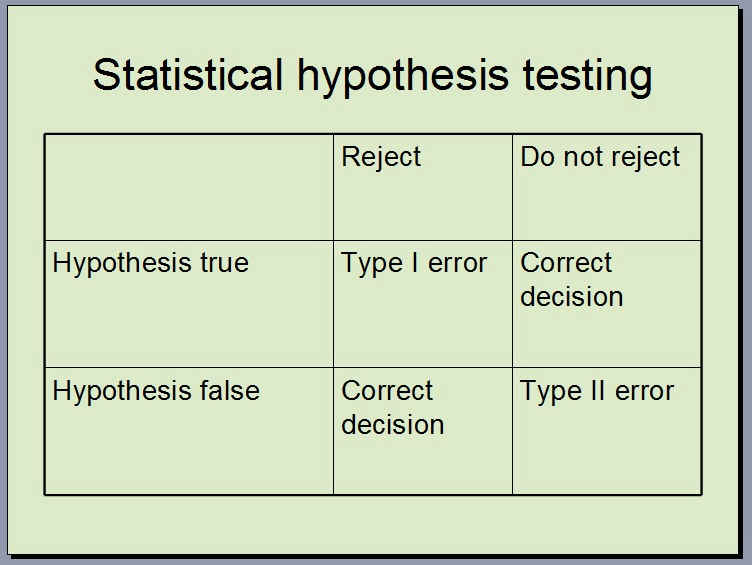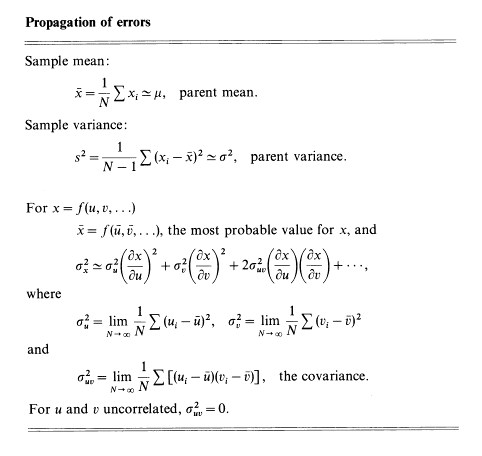
errors
Type I
Type II
false positives
false negatives
rejecting a true hypothesis of
no difference or of no effect
(you say there's a difference
when there really isn't one)failing to reject a false hypothesis of
no difference or of no effect
(you say there's no difference
when there really is one)e.g., a null hypothesis is that there is no difference in abundance of a species in habitat types A and B; the actual case is that there is indeed no difference; and the error would be in rejecting the null hypothesis, thereby concluding that there is a difference when there actually is not a difference
e.g., a null hypothesis is that there is no difference in abundance of a species in habitat types A and B; the actual case is that there IS a difference; and the error would be in failing to rejecting the null hypothesis, thereby concluding that there is no difference when there actually is a difference
e.g., if a model predicts that a species is present in a particular habitat when, in fact, it is absent
e.g., if a model predicts absence of a species in a particular habitat when, in fact, it is present
errors of commission
errors of ommission
ά = Type I error rate
confidence = (1-ά)β = Type II error rate
power = (1-β)




The above two figures are from
http://www.intuitor.com/statistics/T1T2Errors.html.
See also this Java applet that calculates Type I & II
errors:
http://www.intuitor.com/statistics/CurveApplet.html.





On Simpson's Paradox:
http://www.intuitor.com/statistics/SimpsonsParadox.html.